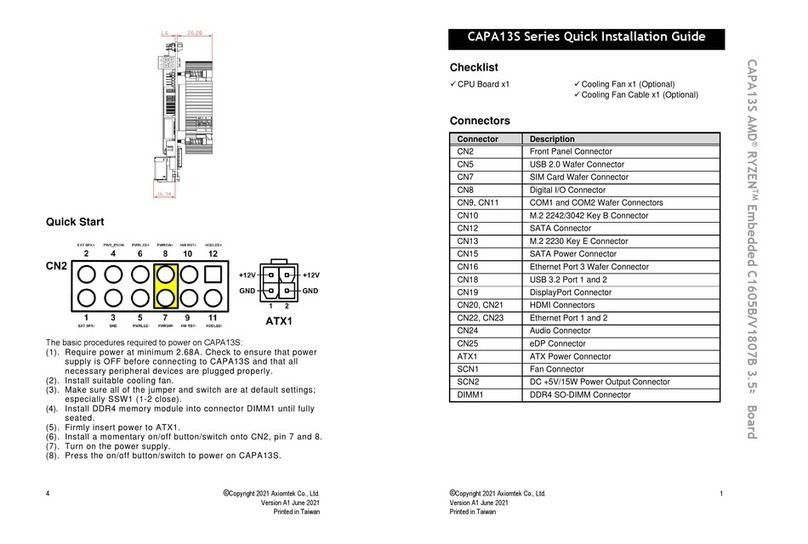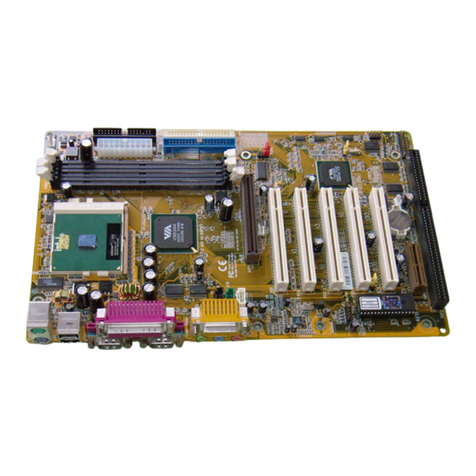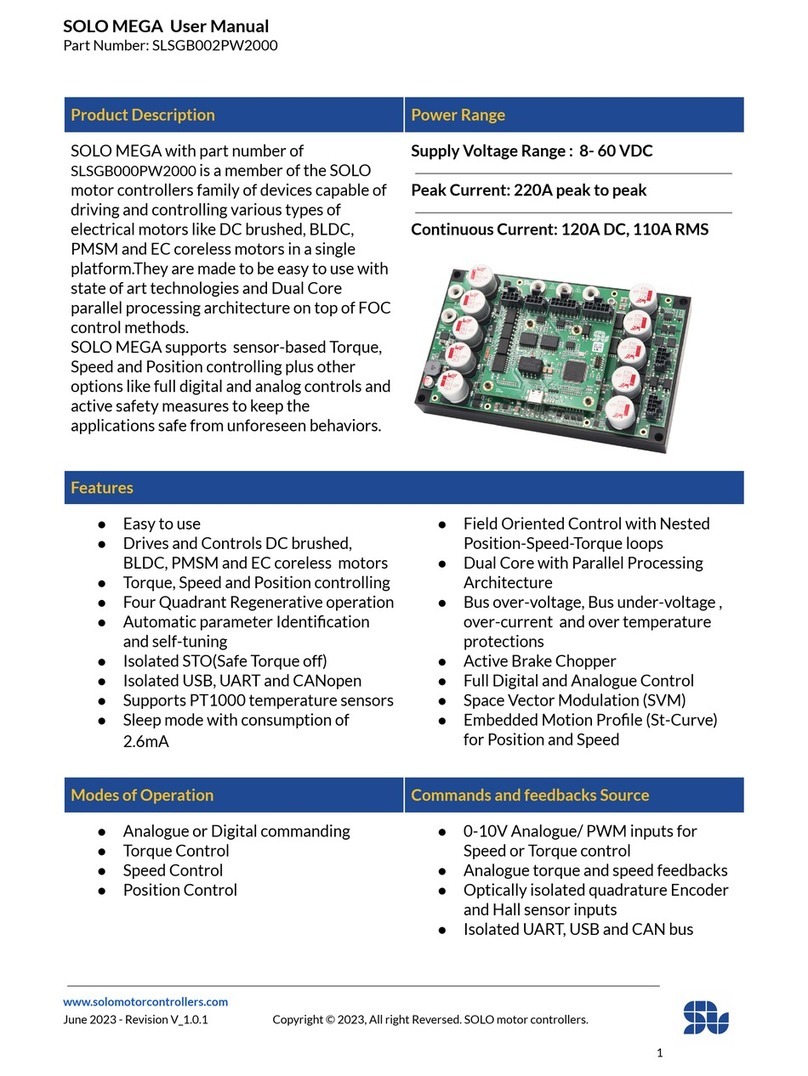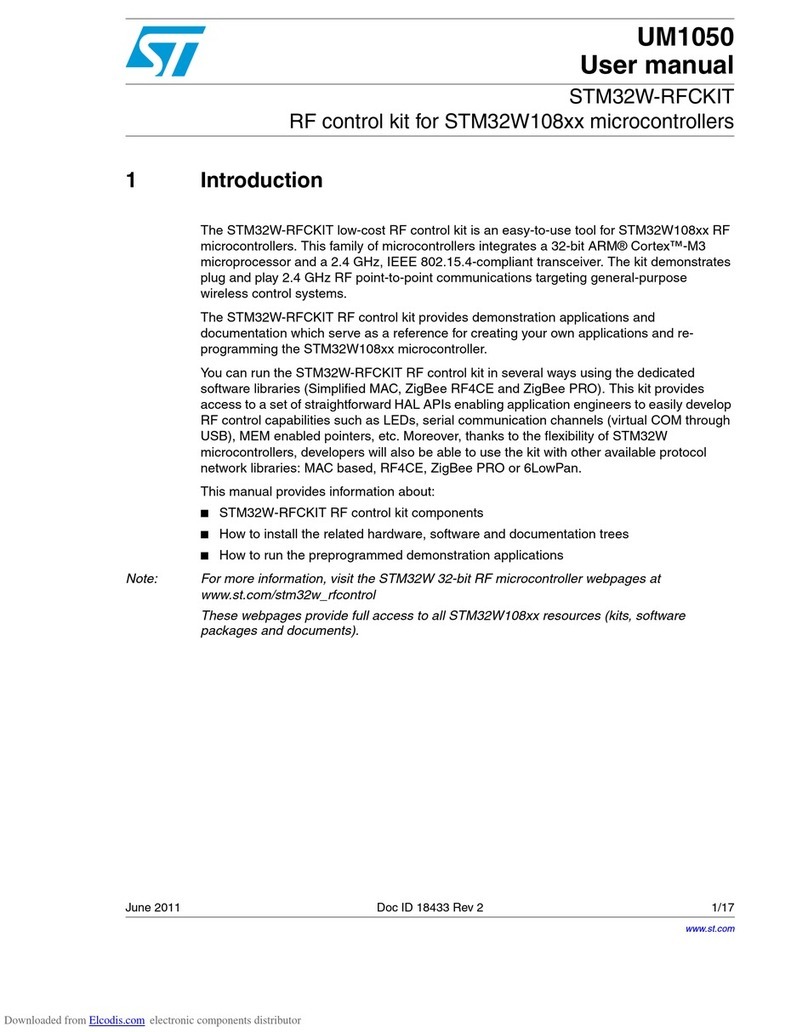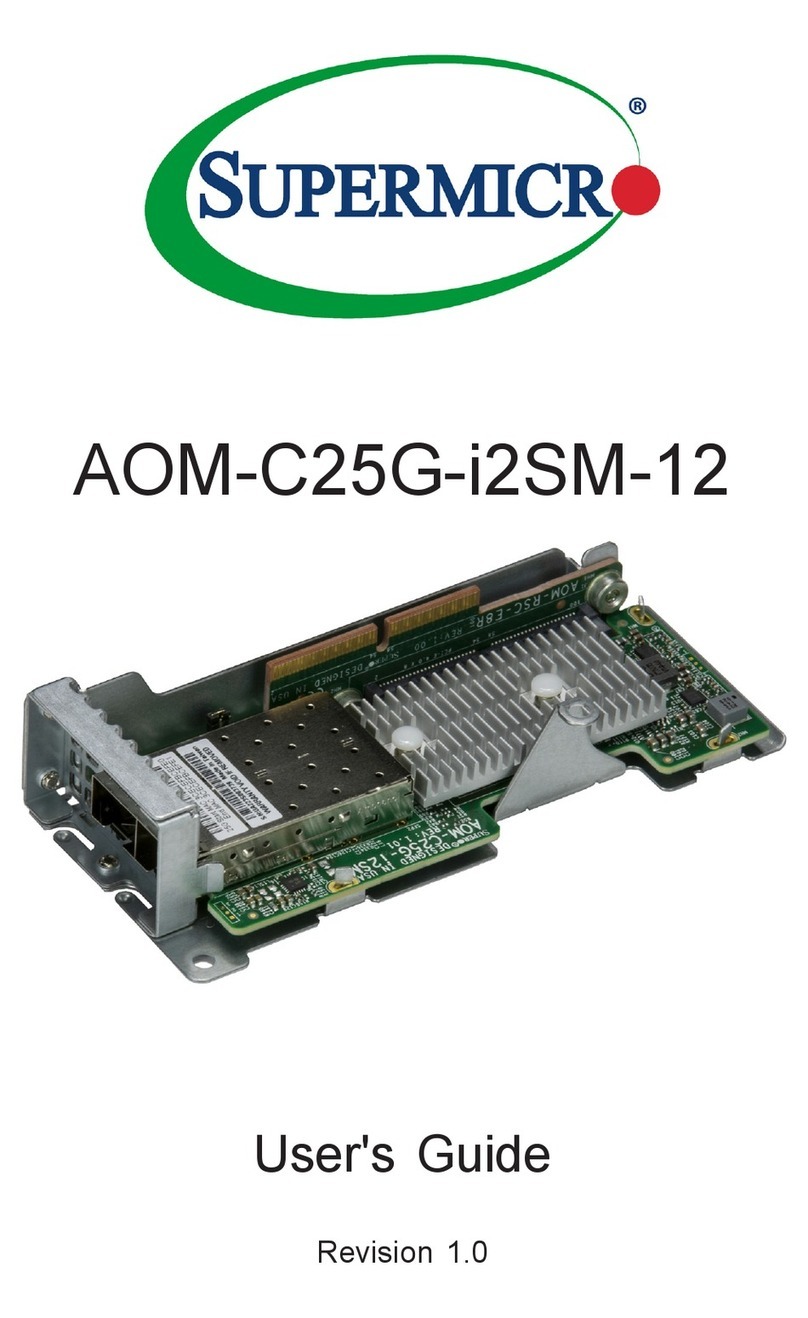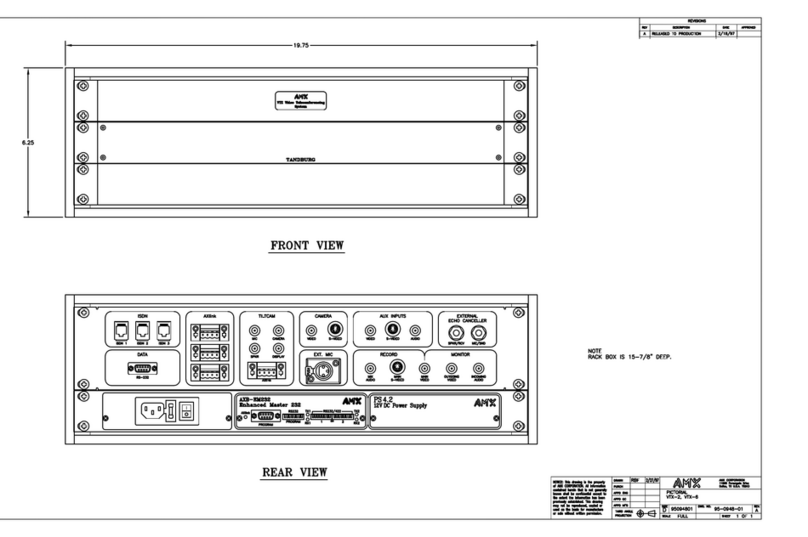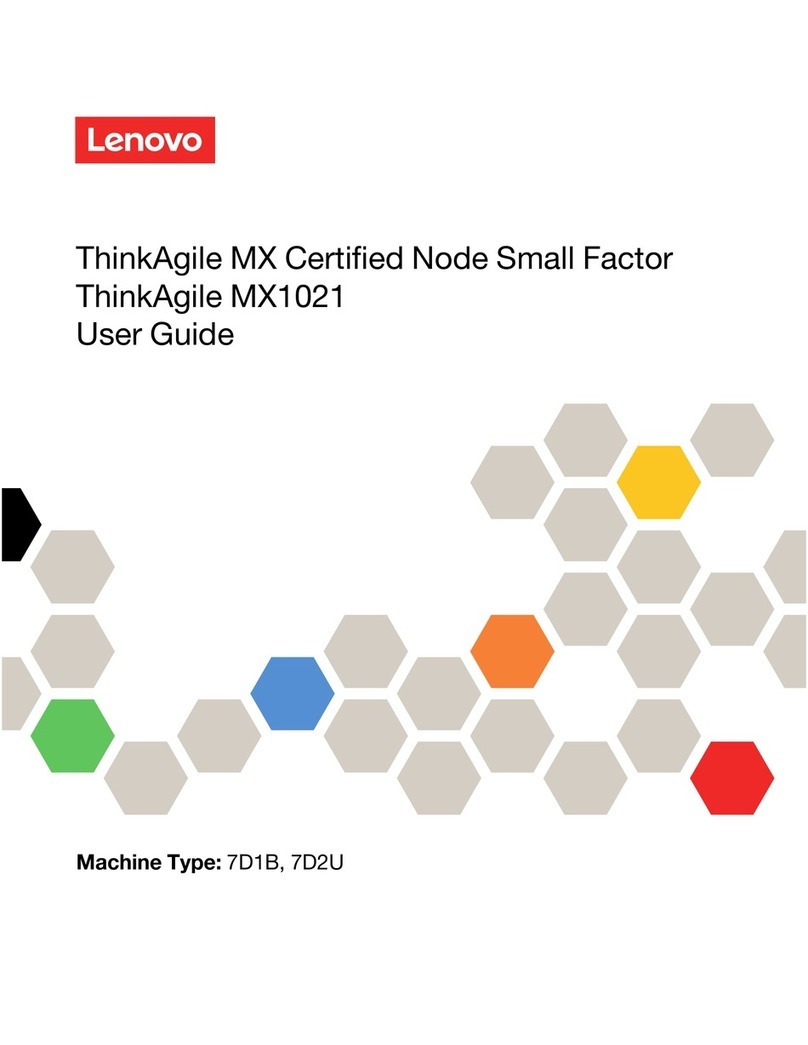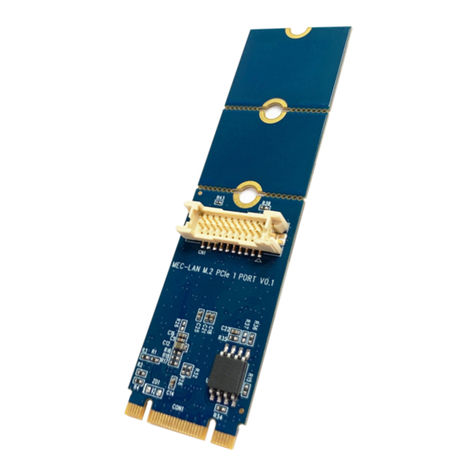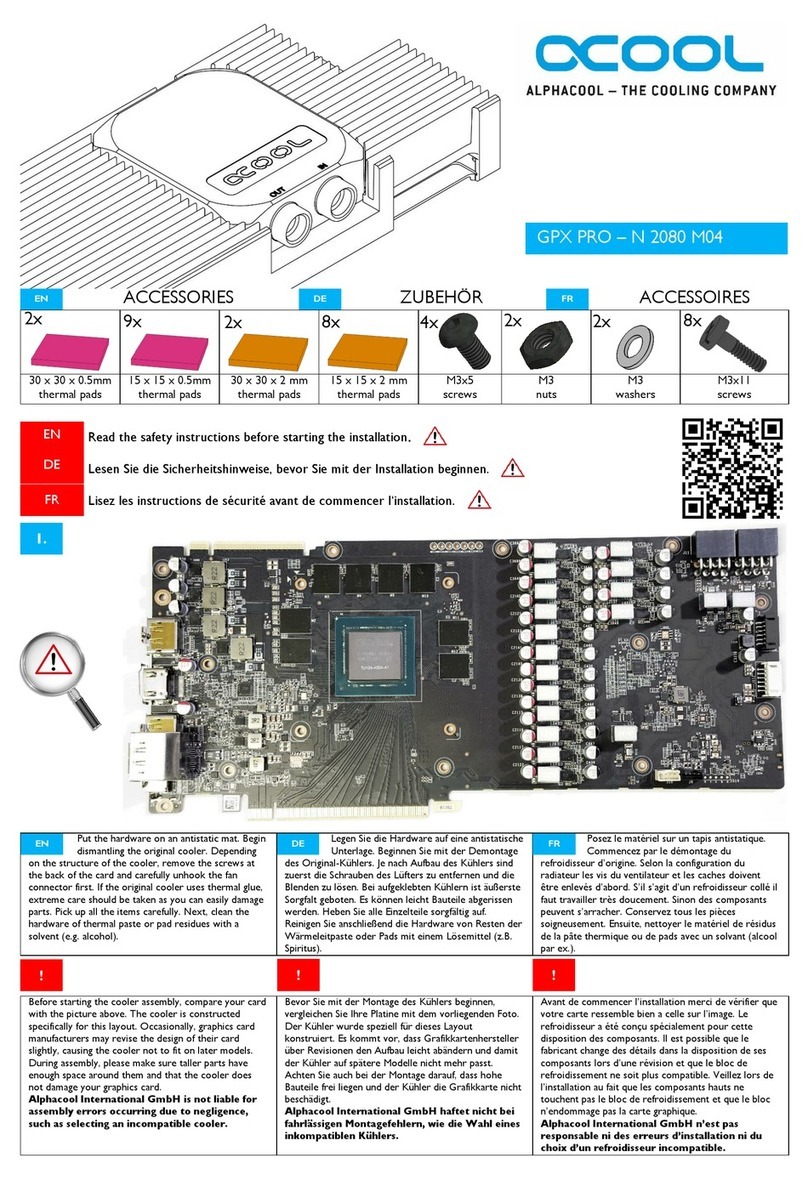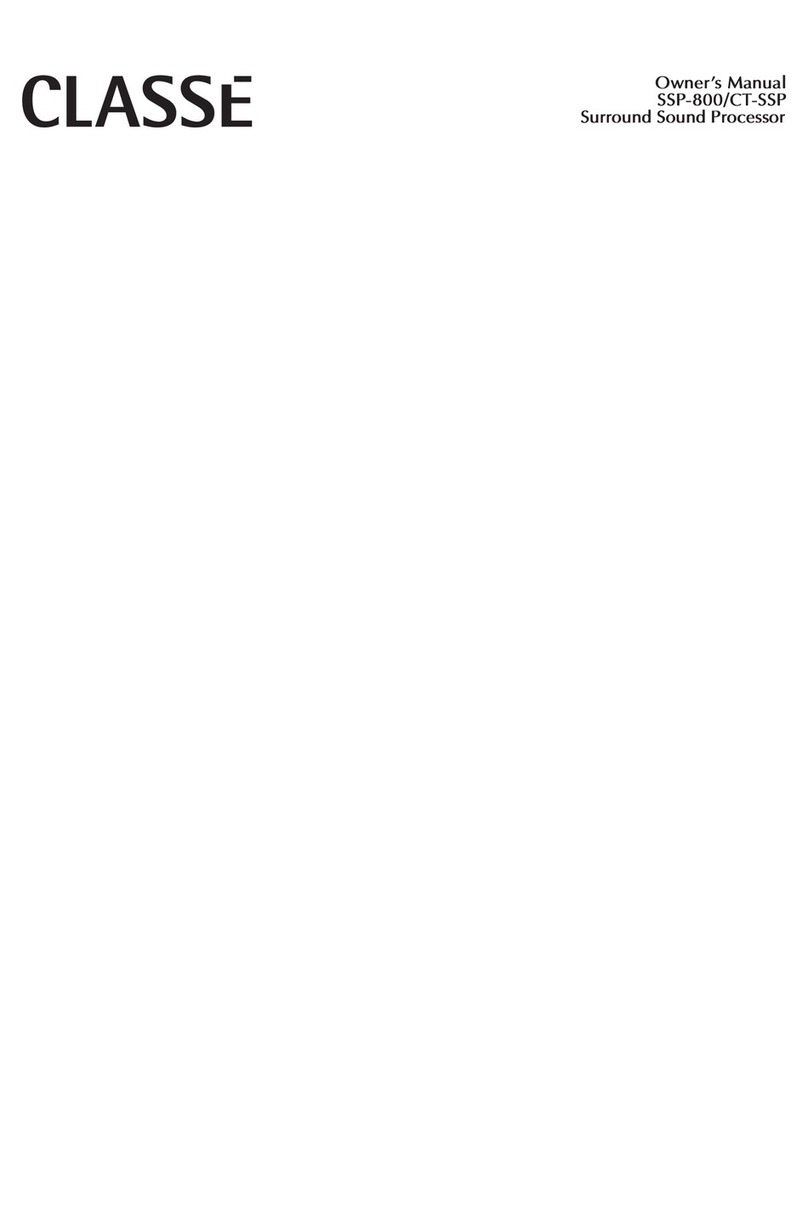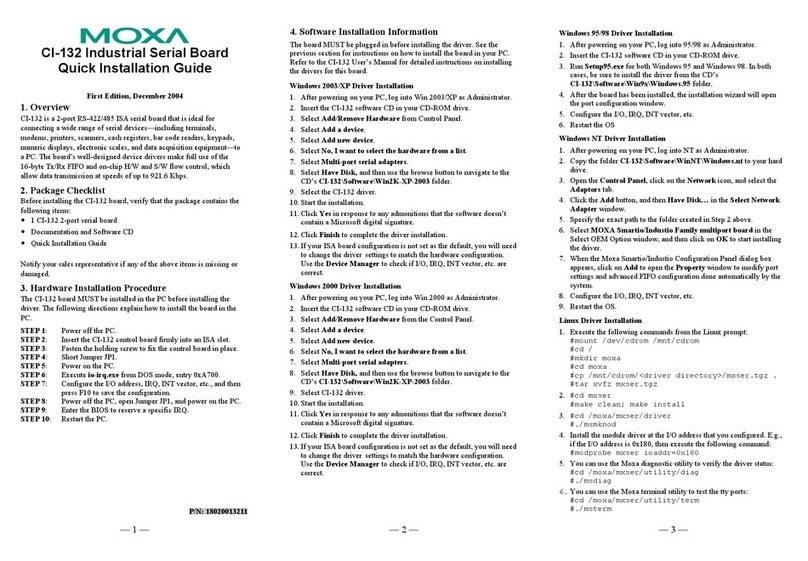ClimateWorx M52 User manual

Advanced M52 Micro processor
User’s Guide for Color Display
ClimateWorx International Inc.
ADVANCED M52UMCT2019 COLOR 14 Chelsea Lane, Brampton, Ontario, Canada L6T 3Y4


Advanced M52 Microprocessor User's Guide
ADVANCED M52UMCT2019 COLOR
2

Advanced M52 Microprocessor User's Guide
ADVANCED M52UMCT2019 COLOR 3
Table of Contents
Sequence of Operation ...................................................................................................................................................... 6
Phase Loss (OPTION):..................................................................................................6
Analogue and digital outputs for functions....................................................................6
DX Demand (Cooling) ...................................................................................................6
Chilled Water.................................................................................................................7
DX Demand (Dehumidification): ..................................................................................7
Rapid Dehumidification Feature (Series 6 units only) ..................................................7
Dual Cooling Units: ......................................................................................................8
Free Cooling Units:.......................................................................................................8
Reheat:...........................................................................................................................9
Humidifier:....................................................................................................................9
PID ..............................................................................................................................10
Internal Safety Controls...............................................................................................10
External Optional Safety Controls...............................................................................10
On/Off Control.............................................................................................................10
Back up Capability ......................................................................................................10
Note: On/Off mode:.....................................................................................................11
Powering Up / Powering Down ...................................................................................................................................... 12
The Control Panel ........................................................................................................................................................... 13
Active tab display area.................................................................................................13
Tab bar.........................................................................................................................13
Operating Status ............................................................................................................................................................. 14
Main Air Temperature & Humidity Readout................................................................14
Process Status Display.................................................................................................14
Network Address ..........................................................................................................14
Unit fan On/Off Icon ....................................................................................................15
Alarm Icon....................................................................................................................15
On/Off Mode Icon ........................................................................................................15
Co-Work™ Address Icon.............................................................................................15
Security ............................................................................................................................................................................ 18
Log-in Security.............................................................................................................18
Log-out Security...........................................................................................................19
Alarms .............................................................................................................................................................................. 20
Active Alarm Queue.....................................................................................................20

Advanced M52 Microprocessor User's Guide
ADVANCED M52UMCT2019 COLOR
4
Clear Alarm Message ..................................................................................................20
Alarm Configuration....................................................................................................21
High Temperature Alarm note:....................................................................................22
Historical Event Log ....................................................................................................................................................... 25
Timer On/Off Schedule ................................................................................................................................................... 26
Review Timer On/Off Schedule....................................................................................26
Programming the Timer On/Off Schedule...................................................................27
Set Clock......................................................................................................................27
Temperature and Humidity Log Graph ........................................................................................................................ 28
Settings ............................................................................................................................................................................. 29
Programming Settings.................................................................................................29
Settings Summary.........................................................................................................30
Settings Summary Glossary.........................................................................................33
Test Mode ......................................................................................................................................................................... 37
Microprocessor Board Diagnostic ..............................................................................37
Digital Board Diagnostic.............................................................................................39
Test Mode Unit on/off..................................................................................................39
Data Re-initialization ..................................................................................................40
Component Configuration ...........................................................................................41
Co-Work™ ....................................................................................................................................................................... 48
Settings Menu, Sensor mode:.......................................................................................49
Alarm Settings, Responses chart: ................................................................................50
Fault Finding ................................................................................................................................................................... 54
High Temperature Alarm.............................................................................................54
Low Temperature Alarm..............................................................................................54
High Humidity Alarm ..................................................................................................55
Low Humidity Alarm....................................................................................................55
High Voltage Alarm.....................................................................................................56
Low Voltage Alarm......................................................................................................56
Low Airflow Alarm ......................................................................................................57
Filter Dirty Alarm........................................................................................................57

Advanced M52 Microprocessor User's Guide
ADVANCED M52UMCT2019 COLOR 5
Fan Overload Alarm....................................................................................................58
Heater Overheat Alarm...............................................................................................58
Boiler Dirty Alarm.......................................................................................................59
High Pressure Alarm...................................................................................................60
Low Pressure or Short Cycling Alarm.........................................................................61
Appendix A: Electrical Schematic Diagrams ................................................................................................................ 62

Advanced M52 Microprocessor User's Guide
ADVANCED M52UMCT2019 COLOR
6
Sequence of Operation
The following is an outline of the operation of the unit. Not all units have all options.
1. Unit powered
2. ClimateWorx Banner appears, controller counts down and beeps ten times.
3. Microprocessor initializes Co-Work and runs self check.
4. Random start timer activates
5. Restart delay counts down
Phase Loss (OPTION):
On loss or cross of a phase of supply power the unit will shut down or display Phase Loss
alarm. You must acknowledge the alarm and correct the phase before the unit will restart.
6. Blower starts (Blower runs continuously) when unit is in the ON position and when
Restart mode is set to Auto.
7. Warm-up period begins to allow time for steady signal from sensors. Temp/Hum readings
flash on screen during warm-up.
8. DX systems, crankcase heaters are energized when compressor is OFF through auxiliary
N/C contact on compressor contactor.
9. Air cooled DX units with flooded condenser Low Ambient Control (LAC) N/C auxiliary
contact on compressor contactor energizes receiver heaters.
Analogue and digital outputs for functions
Cooling 0-10 vdc and 1 or 2 relay outputs
Heating 0-10 vdc and 1, 2 and/or 3 relay outputs
Humidifying 0-10 vdc and 1 relay outputs
Dehumidifying 0-10 vdc and 1 or 2 relay outputs
DX Demand (Cooling)
Cycles on compressors in stages 1 to 32 depending on number of units connected together with Co-
Work as demand for cooling increases from 0 to 100%.
Demand for compressor:
Compressor contactor receives signal from microprocessor. Positive Start timer (Pos. start
delay) starts and bypasses LP switch for cold start-up. When HP switch is closed the start
circuit is complete and the compressor starts.
N/C auxiliary contact on compressor contactor opens and de-energizes receiver heaters.
(Flooded Condenser LAC)
N/C auxiliary contact on compressor contactor opens and de-energizes crankcase heater.
N/O auxiliary contact on compressor contactor enables fans on remote condenser. (Air-cooled
units only)

Advanced M52 Microprocessor User's Guide
ADVANCED M52UMCT2019 COLOR 7
Low-pressure switch remains closed after Pos. start time expires and compressor remains on.
Compressor stops when:
Loss of demand
Compressor contactor opens
Low pressure condition
Compressor stops when LP SW. opens. (Automatic reset) compressor contactor opens.
Short cycling alarm (Low Pressure)
After three consecutive low-pressure alarms in 60 mins, compressor contactor opens. Alarm must
be acknowledged and cleared before Compressor will start.
High pressure condition
Compressor stops when HP Switch opens. (Manual reset)
Compressor contactor opens. Compressor will not start until HP Switch is manually reset and
Alarm is acknowledged and cleared.
Thermal protection opens (automatic reset)
Line voltage cut-outs on all compressors except Specter compressor where the compressor module
causes a Compressor Overload alarm and stops the compressor through the microprocessor.
Compressor module resets after 30 minutes.
Note: Anytime the contactor opens the comp. elapse timer keeps compressor off for 3 minutes
(adjustable)
Chilled Water
On demand for cooling or dehumidification chilled water valve opens as demand signal ramps up
from 0 to 100%. Valve operates on 0-10 Vdc.
Valve closes when:
Loss of demand, signal diminishes to 0 Vdc
DX Demand (Dehumidification):
Cycles on compressors in stages 1 to 32 depending on Series and number of units connected together
with Co-Work as demand for dehumidification increases from 0 to 100%.
Variable speed fans (if available) will nominally slow down to accelerate this process. See settings
tab.
Demand for compressor:
Compressor contactor receives signal from microprocessor. Positive Start timer (Pos. start delay)
starts and bypasses LP switch for cold winter start-up. When HP switch is closed the start circuit
is complete and the compressor starts.
N/C auxiliary contact on compressor contactor opens and de-energizes receiver heaters. (Flooded
Condenser LAC)
N/C auxiliary contact on compressor contactor opens and de-energizes crankcase heater.
N/O auxiliary contact on compressor contactor enables fans on remote condenser. (Air-cooled
units only)
Low-pressure switch remains closed after Pos. start time expires and compressor remains on.
Rapid Dehumidification Feature (Series 6 units only)
If there is less than 20 percent demand for cooling and a demand for dehumidification the Dehum.
Solenoid valve (DSV) closes.

Advanced M52 Microprocessor User's Guide
ADVANCED M52UMCT2019 COLOR
8
The Dehum. Solenoid (DSV) closes off refrigerant flow to part of the evaporator coil. This
causes a drop in suction pressure and a lower coil surface temperature over a portion of the coil.
The coil begins to remove more moisture as a result. The air is partially reheated, as the air
through the inactive part of the evaporator is unconditioned. This creates an overall drop in the
sensible heat ratio (Rapid Dehumidification)
During dehumidification demand, some sensible cooling takes place. Under very low load
conditions, the sensible cooling affect maybe greater than the combined offsetting effect of the
heat load plus the available reheat capacity, which may cause a drop in room temperature. If
temp continues to drop and is less than (set point MINUS (temp dead band DIVIDED by 2)
MINUS heating proportional band) the compressors will stop overriding the demand for
Dehum. The temperature must return to set point before another cycle of dehumidification
starts.
ie: Low limit cutout =Set point – (temp deadband 2) – heating propband
Compressor stops when:
Loss of demand
Compressor contactor opens
Low pressure condition
Compressor stops when LP SW. opens. (Automatic reset) compressor contactor opens.
Short cycling alarm (Low Pressure)
After three consecutive low-pressure alarms in 60 minutes, compressor contactor opens.
Alarm must be acknowledged and cleared before Compressor will start or cycle power.
High pressure condition
Compressor stops when HP Switch opens. (Manual reset)
Compressor contactor opens. Compressor will not start until HP Switch is manually reset
and Alarm is acknowledged and cleared.
Thermal protection opens (automatic reset)
Line voltage cut-outs on all compressors except Specter compressor where the compressor
module causes a Compressor Overload alarm and stops the compressor through the
microprocessor. Compressor module resets after 30 minutes.
Low limit temperature
If return air temperature continues to drop and is less than (setpoint MINUS (temp dead
band DIVIDED by 2) MINUS heating proportional band) the compressors will stop
overriding the demand for Dehum.
Note: Anytime the compressor contactor opens the comp. elapse timer keeps compressor off
for 3 minutes (adjustable). There is also a compressor minimum runtime of 3 minutes
(adjustable) which will prevent the compressor from being turned off by the control. The
compressor can stop during this time through high or low pressure or by cycling the power.
Dual Cooling Units:
Dual cooled units operate on DX as described above in DX Cooling Demand and DX
Dehumidification Demand. In DX mode the chilled water valve is closed. When a remote
signal contact input closes on Compressor Disable Terminal 31 and 32 the compressors will
stop and the unit will operate as described in Chilled Water above.
Free Cooling Units:
Free cooling units operate on DX as described above in DX Cooling Demand and DX
Dehumidification Demand when the glycol loop or outside air temperature is above 7.2C, (45F
adjustable). The modulating glycol valve or output signal for outside air dampers begins to open when
the difference between the return air temperature (Temp Return Air) and the entering glycol
temperature or outside air temperature (Temp EGT/ Ambient) is greater than 3C, (6F adjustable).
The unit will operate in Free Cooling as long as the cooling demand remains in the 0-50% range.

Advanced M52 Microprocessor User's Guide
ADVANCED M52UMCT2019 COLOR 9
Once the cooling demand reaches 51-99% range the unit will operate with one circuit in Free Cooling
and the opposite circuit in DX Cooling. If the cooling demand reaches 100% then the unit will switch
to DX cooling only.
When the glycol or outside air temperature drops below 7.2C (45F adjustable) the compressors will
stop automatically. The unit will operate in Free Cooling mode only at this time. The glycol or outside
air temperature is monitored by the unit using Temp EGT/ Ambient input. Temp Return Air and Temp
EGT/ Ambient can be viewed in the Settings Tab on page one. If the Glycol or Outside Air
Temperature drops below 0C, (32F) the unit will switch to DX cooling only as this too low of a
Glycol fluid or outside air temperature would cause any condensation on the evaporator coil to freeze.
Note: The Status screen on the controller indicates full free cooling is on when it displays 2/2 and will
display 1/1 in combination with DX cooling. Free cooling is off when it displays 0/2 or 0/1 under the
percentage demand next to the Free Cooling icon. The percentage of free cooling in 2/2 will show
double what the main cooling bar is showing. This percentage is reflective of the % that each valve is
open.
Reheat:
On demand for reheat the demand signal ramps up and heater contactor closes at 33% demand. SCR
or Hot Water/ Steam Reheat Valve modulates from 33% to 100% output to match the demand signal.
Once demand has been satisfied the SCR or Hot Water/ Steam Reheat Valve modulates down to 0%
and the heater contactor opens. On Multi-stage heaters each stage will be energized at equal intervals
as the demand increases from 0 to 100%. Stage 1 activates at 33%, Stage 2 activates at 66%, Stage 3
activates at 99%. When demand is met stages deactivate at Stage 3 deactivates at 66%, Stage 2
deactivates at 33% and Stage 1 deactivates at 0% heating demand.
Hot gas reheat only operates on demand for reheat during a dehumidification cycle as the demand
signal ramps up the Hot Gas reheat solenoid valve is activated at 33% reheat demand and remains
open until reheat demand decreases to 0%.
Heater stops when:
Loss of demand
Loss of air flow
Heater high temp cut out
Humidifier:
When the “On/Off/Drain “ switch is in the “On” position, a demand for humidification causes the
humidifier contactor(s) to close in stages 1 to 16, (depending on the number of units connected
together with Co-Work), as demand for humidification increases from 0 to 100%.
After a short time delay, approximately 1 to 3 minutes, the fill valve will energize allowing water to
fill the boiler bottle. The fill valve closes when the humidifier reaches its FLA current or when the
water level reaches the high water level sensor. Water begins to boil after a few minutes. The
humidifier will continue to boil and fill to maintain the humidity set point. Periodically the humidifier
will initiate a flush cycle to maintain constant steam output and to flush some of the mineral content
from the boiler bottle.
When the boiler bottle reaches the end of its useful life it will activate a Boiler Dirty Alarm and will
shut off the humidifier. It is common for the Boiler Dirty Alarm to sound on an initial start-up as the
humidifier begins the process of concentrating the mineral content of the contained water.
To drain the humidifier you must cause a humidification demand and then switch the “On/Off/ Drain”
switch to Drain. You must set the switch back to “Off “when the bottle has completely drained.

Advanced M52 Microprocessor User's Guide
ADVANCED M52UMCT2019 COLOR
10
Humidifier stops when:
“On/Off/Drain” switch is switched "Off" or “Drain”
Loss of demand
Loss of air flow
Humidifier Service Alarm intervention.
PID
The M52 microprocessor uses PID control logic to maintain the set point conditions. The following
parameters are adjustable so the controller can be fine-tuned to specific site conditions.
Dead band, temp. humid. dead band
Cool prop. band
Heating prop. band
Humidifying prop. band
Dehum. prop. band
Integral time temp
Integral time hum.
Internal Safety Controls
Fuses (60 Hz), circuit breakers (50 Hz) on all components
Fan overload relay (Vertical floor mount, VFM systems only)
Air proving switch (Vertical floor mount, VFM systems only)
Dirty filter switch (Vertical floor mount, VFM systems only)
High pressure refrigerant (manual reset)
Low pressure refrigerant
Internal thermal protection compressor
High temp cut out for heater
High water level sensor/ current transducer
Compressor elapse timer
Crank case heaters
External Optional Safety Controls
Fire stat or Smoke detector terminals 19 and 20
EPO terminals 19 and 20
On/Off Control
Local Mode:
When the controller is set to Local Mode, On/Off control of the unit is controlled by the keypad
When the controller is set to Remote Mode, On/Off control can also be controlled by a remote signal
through terminals 15 and 16. When this is active, On/Off control of the unit cannot be controlled by
the keypad
Timer Mode:
When the controller is set to Timer, On/Off control follows the time schedule programmed on the
controller. Unit can be set to be On, Off or Relax. Relax mode cause the microprocessor to control
using the RELAX deadbands which are programmable. In this mode the fan continues to operate.
Back up Capability
Standby Enable:
Each unit sends an output to start a back up unit in the event of an alarm condition as configured in the
Alarm Response menu. Terminals 11 and 12
Standby Start:
Each unit accepts an input signal to start regardless of its On/Off mode state at terminals 17 and 18

Advanced M52 Microprocessor User's Guide
ADVANCED M52UMCT2019 COLOR 11
Note: On/Off mode:
When operating in a Co-Work network all On/Off mode options are synchronized. Therefore,
turning off a unit, either by the touch screen when in Local, by the remote on/off at terminals 15
and 16 when in Remote, or through the schedule when in Timer mode will turn off all units in
that network.
To turn off an individual unit either as a stand-alone or in a Co-Work network see the Test Mode
section or simply open the disconnect switch.
Local/Remote RemoteON/OFF RemoteDem.Off StandbyStart UnitOperation
Local OFF OFF OFF STOP
Local ON OFF OFF RUN
Local OFF ON OFF Stop
Local OFF OFF ON RUN
Local ON ON OFF STOP
Local ON ON ON RUN
Local OFF ON ON RUN
Local OFF OFF OFF RUN
Local ON OFF OFF RUN
Local OFF ON OFF STOP
Local OFF OFF ON RUN
Local ON ON OFF STOP
Local ON ON ON RUN
Local OFF ON ON RUN
Remote OFF OFF OFF STOP
Remote ON OFF OFF RUN
Remote OFF ON OFF STOP
Remote OFF OFF ON RUN
Remote ON ON OFF STOP
Remote ON ON ON RUN
Remote OFF ON ON RUN
Remote OFF OFF OFF RUN
Remote ON OFF OFF RUN
Remote OFF ON OFF STOP
Remote OFF OFF ON RUN
Remote On ON OFF STOP
Remote On ON ON RUN
Remote OFF ON ON RUN

Advanced M52 Microprocessor User's Guide
ADVANCED M52UMCT2019 COLOR
12
Powering Up / Powering Down
The first powering up must be performed by CLIMATEWORX authorized
personnel only. Failure to do so may damage the unit and void the warranty.
The main power switch (rotary disconnect) is located on the front of the unit. Series 6, 8, 9 and
P only. For Series 7 and 11 it is located inside electrical panel
Immediately after turning on the main power switch, the control system will perform the
following power up sequence:
1. The control system will generate three short “beep” sound to alert power has been
applied and the unit is about to start.
2. The control system will then perform a self-test and verify all stored setting and data are
within valid range.
3. After the self-test, the control system will count down the programmed “Restart delay”
time and then put the system into normal operation.
To power down unit:
For units in Local Mode log into appropriate security level (refer to Log-in Security). An
On/Off toggle switch will appear on the bottom left corner of the display. Press “O” to power
down unit. Once fan stops, open disconnect.
For units in Timer or Remote Modes, log into security level three, change On/Off mode to
“Local” (Settings tab, page 4). Follow above procedure to power down unit.

Advanced M52 Microprocessor User's Guide
ADVANCED M52UMCT2019 COLOR 13
The Control Panel
The control panel is formed by a graphic LCD display and an overlay touch screen keypad. The
layout of the screen consists of three distinctive regions - the Banner line, the Active tab display
area and the Tab bar. The tabs are set-up like the tabs in a 3-ring binder. Each section contains
different information.
A
ctive Tab Display Area
T
ab Bar Banne r Line
The Banner line shows the current date and time. Date is in DD/MM/YYYY format and time in
24-hour HH:mm format.
Active tab display area
Data and information are grouped into tabs for ease of retrieval. The Active tab display area
shows information corresponding to the current selected tab.
Tab bar
Tab bar shows the available tabs and allows user to switch tab display by pressing the
corresponding tab icon. There are 7 tabs in the Tab bar:
Settings Tab
Testmode Tab
Alarm Tab
Timer On/ Off Schedule Tab
Historical Event Tab
Temperature and Humidity Graph Tab

Advanced M52 Microprocessor User's Guide
ADVANCED M52UMCT2019 COLOR
14
Operating Status
Main air humidity
Alarm description
Main air temperature
Co Work address icon
System Type
Alarm Icon
Unit fan on/off icon
On/Off Switch
Main Air Temperature & Humidity Readout
The main temperature & humidity readout shows the values of the sensor set to control the
system “Control Sensor”. Temperature readout can be displayed in either °C or °F depending
on the setting “Temp units”.
Process Status Display
This region shows the current operating status of the system by means of graphic icons and
analogue bar.
Cooling Heating
Dehumidifying Hum idifying
Free Cooling
shows when active)
Network Address
This shows the Network address set in setting “Network address”. Every unit in the network
must be set to a unique address. This address relates to the RS485 serial communication buss.
The terminal connection is P501 on main board with a native output protocol MODbus RTU.
Follow the field wiring diagram as shown on page 70.

Advanced M52 Microprocessor User's Guide
ADVANCED M52UMCT2019 COLOR 15
Unit fan On/Off Icon
The unit fan on/off icon appears when the unit fan is running except during fan purge delay the
icon does not appear while the fan continues to operate for this period of time.
Alarm Icon
The alarm icon shows up if there is any active alarm in the system. You can review the details
of the alarm in the {Alarm} tab.
On/Off Mode Icon
The On/Off mode icons keep you aware of the current On/Off mode selection. The On/Off
mode selection can be set in the “On/Off mode” setting under the {Setting} tab for local, remote
and timer modes. Remote on/off and Standby Start Icons will appear only when the function is
active.
Local on/off control via control panel
Remote on/off control via switch input
Programmed timer schedule auto on/off
Standby start back-up start mode
Co-Work™ Address Icon
This shows the Co-Work™ operation mode and Co-work network address.
Duty Unit (e.g. Address 1) Standby Unit (e.g. Address 1)
Co-work icon is always visible but will only be blue when unit is connected in a co work
network and the unit is in the standby mode.

Advanced M52 Microprocessor User's Guide
ADVANCED M52UMCT2019 COLOR
1
6
Every master unit in the Co-Work™ network must have a unique address which can be set
through the DIP switches on the main board. Jumpers must also be installed on 2 units in each
Co-work network at position JP401 shown below.
LED Flash Fast- Single Unit, Flash Slow- Master Unit, Solid ON- Slave Unit
Co work DIP Switches SW402
Co work Jumper JP401
Co work LED Y202
Fig 1.MainBoard DIP Switch

Advanced M52 Microprocessor User's Guide
ADVANCED M52UMCT2019 COLOR 17
This is CAN ID and is only used for co-work.
CANBUS ID
1
2
3
4
1 0 0 0 0
2
0
0
0
1
3
0
0
1
0
4
0
0
1
1
5
0
1
0
0
6
0
1
0
1
7
0
1
1
0
8
0
1
1
1
9
1
0
0
0
10 1 0 0 1
11 1 0 1 0
12 1 0 1 1
13 1 1 0 0
14 1 1 0 1
15 1 1 1 0
16 1 1 1 1
Each display must have the corresponding Co-work address selected to display in the upper
right hand corner. This is done by logging in with level 1 pass word and then touching the co work
icon in the upper right hand corner. Selected the appropriate number of icon to correspond with the
addressing of the main board done in the previous step.
Note: In the Co-work configuration the member with the lowest Co-work number will always be the
master unit.
Co Work network active Icon
Select unit Icon

Advanced M52 Microprocessor User's Guide
ADVANCED M52UMCT2019 COLOR 18
Security
To prevent unauthorized interference with the system operation and settings, the M52
Microprocessors have three levels of security that can be assigned to different personnel having
different responsibilities.
Settings can only be altered after entering the four-digit password for the corresponding security
level.
The factory default password and access right for each security level is summarized in the
following table:
Function / Description Admin Factory User
Default password 1024 4321 1234
Local on/off control
Alarm clear
Alarm configuration
Time schedule / clock
Setting - configuration 1
Setting - configuration 2
Setting - control parameter
Test mode – Data Re-initialization
Test mode – Local net setting
Test mode – Server setting
To invoke security log-in or log-out, simply press the tab at log-in or log-out:
Press tab
not logged-
in
yet
already logged-in
Log-in Security
On the first power-up, you can log-in to security by using the factory preset password “1024”,
“4321” and “1234” for security level Admin, Factory and User respectively.

Advanced M52 Microprocessor User's Guide
ADVANCED M52UMCT2019 COLOR 19
Log-out Security
Exiting the security can be achieved by pressing the Log-out key in the log-out / change
password screen.
Password Entr
y
Ke
y
s
Securit
y
level selector
The system will also automatically re-lock security approximately 1 minute after the last key is
released.
Table of contents
Popular Computer Hardware manuals by other brands
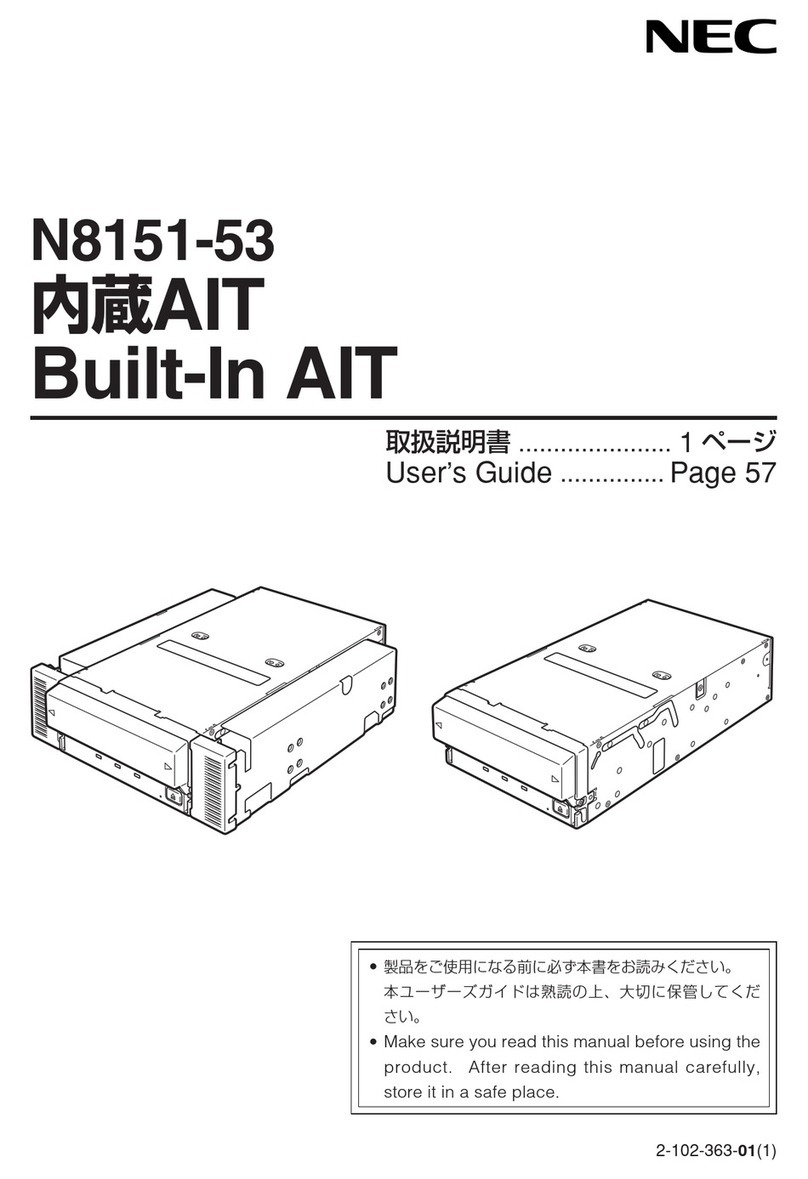
NEC
NEC N8151-53 user guide
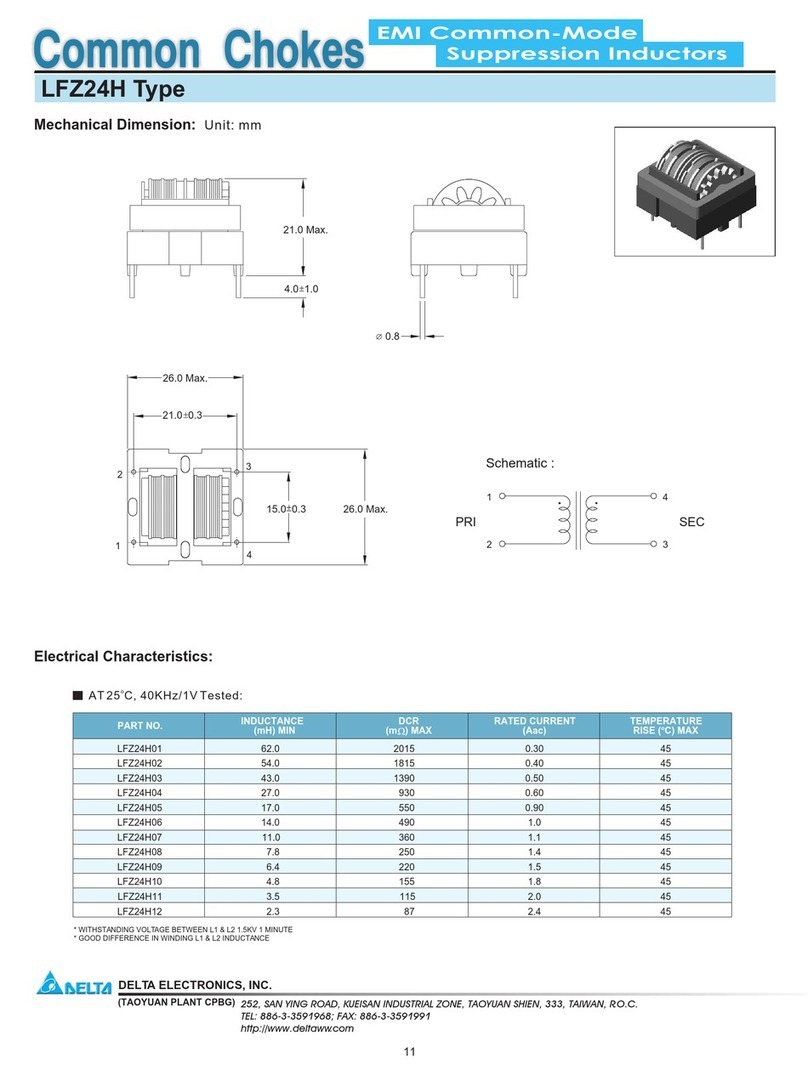
Delta Electronics
Delta Electronics Suppression Inductors LFZ24H Specification sheet

Nexo
Nexo Digital TDcontroller Series user manual

Siemens
Siemens SIMATIC NET CP 5613 A2 operating instructions
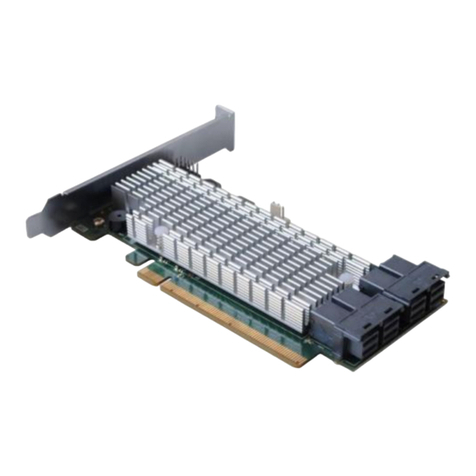
HighPoint
HighPoint Rocket 1120 Quick installation guide
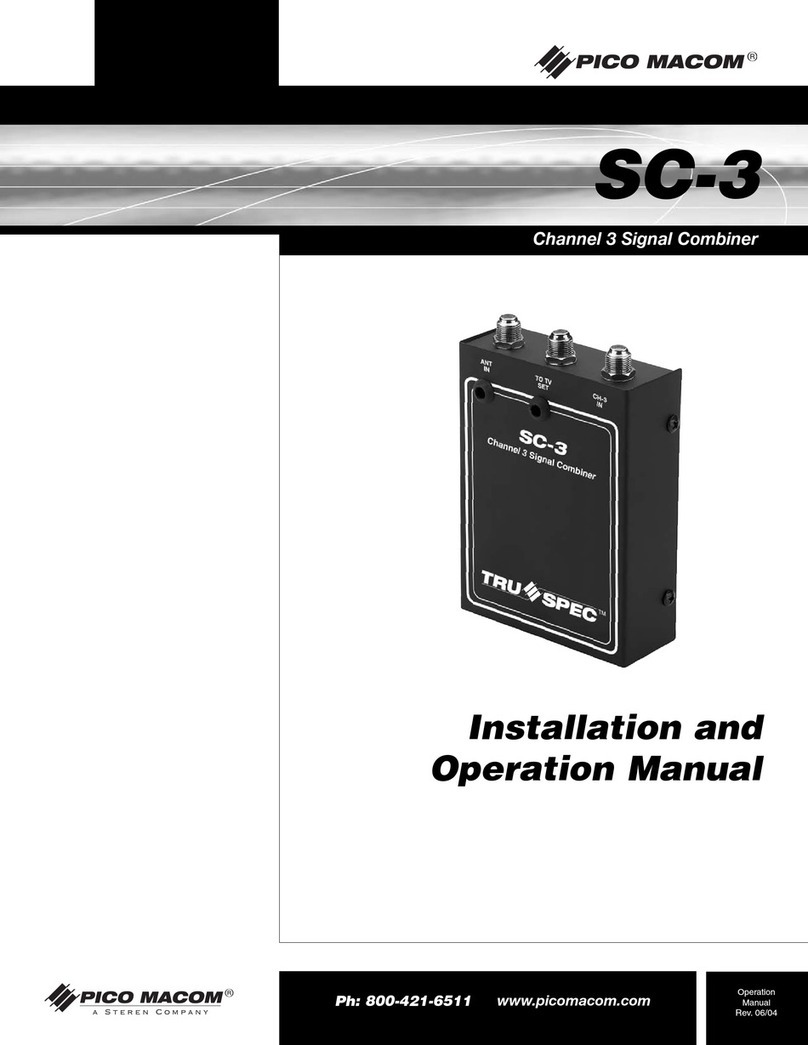
Pico Macom
Pico Macom SC-3 Installation and operation manual
